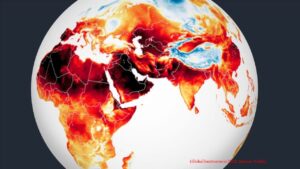
Date: Monday, 7 October 2024; 3rd Anniversary.
Coordinator: World Trade Organization (WTO)
Objectives:
World Cotton Day is annually observed for the following purposes:
- to raise awareness of the importance of cotton and cotton-related products,
- to highlight the vital role that cotton plays in economic development and poverty alleviation in least-developed countries, and
- to promote the international trade of cotton and enable developing and least-developed countries to benefit from the cotton supply chain industries.
Inception:
The World Cotton Day was held around the world for the first time on 7 October 2021.
The concept of World Cotton Day has its roots in a sectoral cotton initiative launched in 2003 at the World Trade Organization by the Cotton-4 countries: Benin, Burkina Faso, Chad, and Mali. The initiative aimed to improve market access opportunities for cotton and cotton-related products from least-developed countries and to highlight the linkages between cotton, trade, and development.
On 7 October 2019, the WTO Secretariat, in collaboration with the secretariats of the United Nations Food and Agriculture Organization, the United Nations Conference on Trade and Development, the International Trade Centre, and the International Cotton Advisory Committee, hosted a session of discussion on cotton and proposed to designate October 7 as World Cotton Day. So far, cotton is the sole commodity discussed separately at WTO.
On 30 August 2021, the 75th session of the United Nations General Assembly adopted a resolution (A/RES/75/318) proclaiming 7 October of each year as World Cotton Day. The resolution acknowledges the hundreds of millions of people around the world who earn their livelihoods through their work in cotton production and related industries and recognizes the role of women in the cotton sector, particularly in developing and least-developed countries.
Why do we mark the World Cotton Day?
Cotton is one of the most common fabrics used in textiles and clothing. It is quite comfortable, hypoallergenic, breathable, and durable. Cotton is the only agricultural commodity that provides both fiber and food. It can be used to produce edible oil, its seed can be used as animal fodder, and its stems and leaves can be used as fuel. Almost nothing from cotton is useless. Unlike synthetic fabrics, cotton is an environment-friendly substance since cotton fabric biodegrades rapidly. The use of cotton can help reduce plastic pollution.
Cotton is a crop that can grow in arid climates and thrive in dry and arid zones. Although cotton occupies just 2.1% of the world’s arable land, it meets 27% of the world’s textile needs. The cotton sector is a major source of livelihoods and incomes for smallholders and laborers, including women, in the poorest rural areas in the world. It is a poverty-alleviating crop in developing and least-developed countries. Cotton is also a global commodity traded worldwide. It plays a vital role in the national economy of different countries since cotton benefits more than 100 million families in over 75 countries across five continents. World Cotton Day serves as a key opportunity to spread knowledge and showcase cotton-related activities and products.
Official website:
www.un.org/en/observances/cotton-day


What are the events to celebrate World Cotton Day?